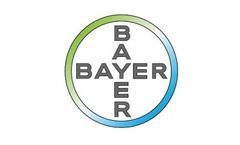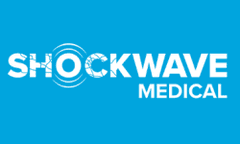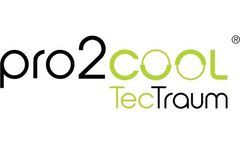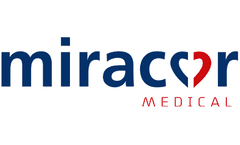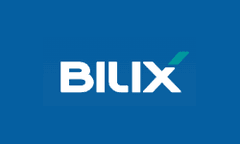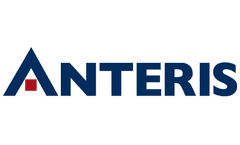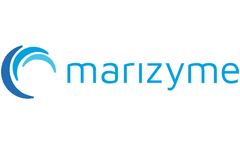Myocardial Infarction Articles & Analysis
51 news found
The frequency of net-clinical benefit events - a composite of stroke or systemic embolism, major bleeding, myocardial infarction, acute coronary syndrome, or cardiovascular death - was 13.8 per 100 patient years in the rivaroxaban and 13.6 in the VKA group (95% CI 0.72 to 1.31, HR=0.97). ...
ByBayer AG
FDA in July 2021 to reduce the risk of sustained eGFR decline, end-stage kidney disease, CV death, non-fatal myocardial infarction (MI), and hospitalization for heart failure in adult patients with CKD associated with T2D. ...
ByBayer AG
The primary efficacy endpoint was the composite of CV death, myocardial infarction (MI), stroke and stent thrombosis and the primary safety endpoint was Bleeding Academic Research Consortium (BARC) bleeding definition type 2, 3 and 5. 1601 patients were randomized into the trial across 157 sites and 23 countries. ...
ByBayer AG
The depiction of 68Ga-FAPI-46 PET signal after acute anterior myocardial infarction was selected as SNMMI’s 2022 Image of the ...
BySOFIE
The primary efficacy endpoint was a composite of MALE and MACE, ie. acute limb ischemia, major amputation of a vascular etiology, heart attack (myocardial infarction, MI), ischemic stroke or cardiovascular death. The primary safety outcome was major bleeding according to the Thrombolysis in Myocardial Infarction (TIMI) ...
ByBayer AG
The components of target lesion revascularization (TLF) were low in both women and men and numerically favored females, including target vessel-myocardial infarction (8.5 percent vs 9.7 percent), target lesion revascularization (2.9 percent vs 4.2 percent) and stent thrombosis (0 percent vs 1.2 percent). ...
” Hypothermic therapy (“cold therapy”) has been shown to have clinical efficacy in a variety of cardiovascular injuries, including cardiac arrest and myocardial infarction (heart attack). The physiologic neuroprotective benefit from cooling the injured region is believed to occur at the cellular level. ...
Miracor Medical SA (Miracor Medical) today announced the first patient enrolled in the PICSO-AMI-V study to evaluate the benefits of PiCSO® (Pressure-controlled intermittent Coronary Sinus Occlusion) therapy as an adjunct to conventional primary percutaneous coronary intervention (PCI) for patients presenting with inferior ST-Elevation Myocardial Infarction ...
The code provides clear reimbursement for the study procedure performed for both the treatment and control arms for the ongoing cell therapy pivotal trials in two cardiovascular indications: the CardiAMP Cell Therapy Heart Failure Trial (NCT02438306) and the CardiAMP Cell Therapy Chronic Myocardial Ischemia Trial (NCT03455725). “This most recent action by CMS further ...
The disease that Villix first targeted is ischemic reperfusion injury that occurs in organ transplant myocardial infarction, coronary artery bypass surgery, and stroke. Myocardial infarction occurs after the patient has undergone stenting. ...
BioCardia also partners with other biotherapeutic companies to provide its Helix systems and development support to their programs studying therapies for the treatment of heart failure, chronic myocardial ischemia and acute myocardial infarction. The CardiAMP Cell Therapy Heart Failure Trial has been supported financially by the Maryland Stem ...
At the 30-day follow up point, the first five patients of the planned 10-patient study showed: All five subjects continued to do well with no reported adverse events (no death, stroke, myocardial infarction, reintervention). An average 86% improvement in mean gradient (standard measure of stenosis severity) from pre-treatment levels. ...
Permanently discontinue FOTIVDA for severe arterial thromboembolic events, such as myocardial infarction and stroke. Venous Thromboembolic Events: Closely monitor patients who are at increased risk for these events. ...
Permanently discontinue FOTIVDA for severe arterial thromboembolic events, such as myocardial infarction and stroke. Venous Thromboembolic Events: Closely monitor patients who are at increased risk for these events. ...
DuraGraft enhances coronary artery bypass grafting (CABG) surgical outcomes by significantly reducing major adverse cardiac events such as repeat revascularization and myocardial infarction. DuraGraft is approved for use in the EU and several Asian countries but is not yet approved for use in the U.S. ...
The GOAL Study is an independent investigator observational clinical study to assess the role of vascular graft /storage solutions on myocardial protection during coronary artery bypass grafting (CABG) surgeries. ...
It will focus on the use of robotics in treating strokes, the second most common cause of death globally after myocardial infarctions. The program will begin with a clinical study into the treatment of carotid artery disease using R-One™, the first robotic platform developed by Robocath, which has been on the market since 2019. ...
ByRobocath
As well as safety endpoints (30 days and 1 year): All-cause mortality Myocardial infarction Stroke/disabling Life threatening bleeding. Other endpoints include DurAVR™ THV system ease of use (commissural alignment) and adverse events (according to VARC-3 criteria). ...
DuraGraft enhances coronary artery bypass grafting (CABG) surgical outcomes by significantly reducing major adverse cardiac events such as repeat revascularization and myocardial infarction. DuraGraft is approved for use in the EU and several Asian countries but is not yet approved for use in the U.S. ...
Hypothermic therapy (“cold therapy”) has been shown to have clinical efficacy in a variety of cardiovascular injuries, including cardiac arrest and myocardial infarction (heart attack). The physiologic benefit from cooling the injured region is believed to occur at the cellular level. ...

